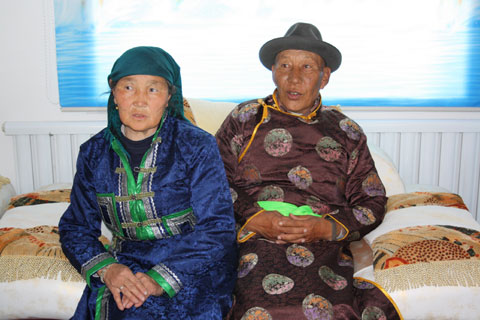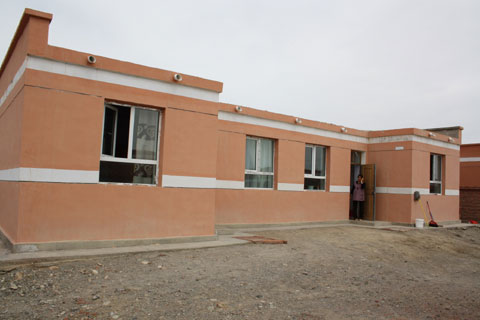
|
CHINA> Ethnic and Religious Affairs
 |
|
Northern Xinjiang relocation homes improve nomad lives
By Lei Xiaoxun (China Daily)
Updated: 2009-04-28 17:37
 Dangbu and his wife happily dress themselves up on the day they move into their new bungalow house. The Mongolian couple never imagined they’d be able to live in a cozy place like this. “As nomad people, we are used to moving from time to time in order to find suitable pastures for our cattle. But now we can enjoy a convenient life in our new home,” Dangbu said. His house, as part of a new village pilot program, is one of 80 new houses which the local Hebukesaier Mongol autonomous county authority has spent 8 million yuan on. The prime aim of the program is to relocate poor and unstable nomadic populations from the mountainous region of Hebukesaier county. “Their cattle, as well as their own lives, were under threat if they continued to follow the traditional pasturing transition from summer to winter,” said Dong Mei, an official with the county. In contrast, they can live in the same place for a long time, without worrying about hustling from one place to another. Plus, it’s much more convenient to live in a bungalow house, as each one is equipped with tap water and a constant electricity power supply.
 Some of the houses were allocated free of charge, while some people must pay a certain sum to get one. “The program is designed to meet different family conditions,” Dong said. The county authority will make a formal assessment on the eligibility of applicants before reaching a conclusion. For instance, the Dongbu’s had to pay 20,000 yuan to get their new house because their family affordability is not among the worst in the village. In the meantime, the Hebukesaier government will spend an equivalent amount of money on the design, construction and internal decoration of the house. Due to the long frost season in the region, it took about 2 years for the houses to be built. “Our program may have proceeded slowly, but it leaves plenty of time to construct a house strong enough to survive a strong earthquake,” Dong said. According to the implementation pace of the program, Hebukesaier will double the number of new houses in 2009. Each house design features a cattle barn in the backyard, which enables the relocated nomad people to feed their own cattle. “There is nothing inconvenient about living in such a bright new home,” Dongbu said happily. China Daily Xinjiang Bureau
|